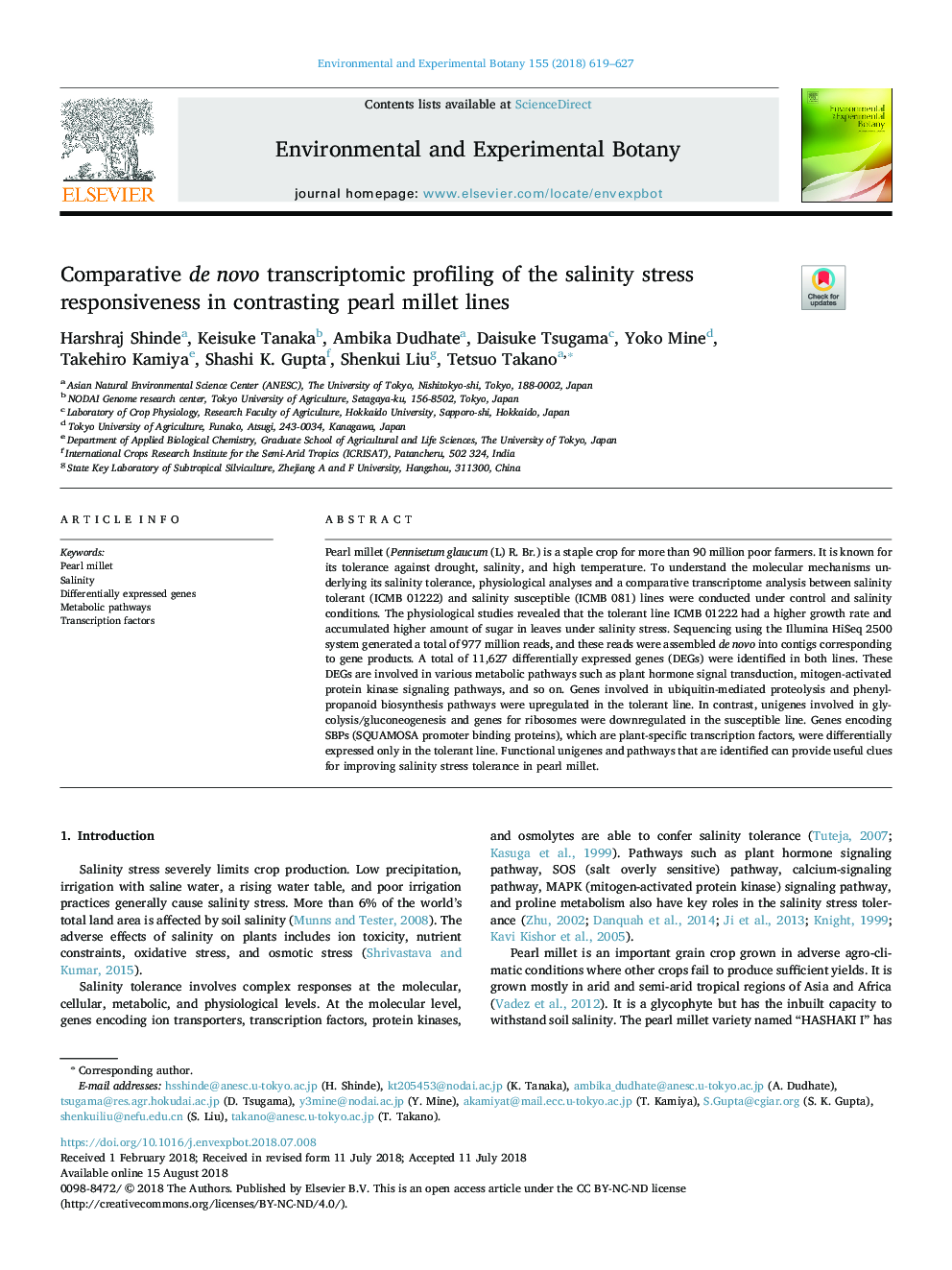| Article ID | Journal | Published Year | Pages | File Type |
|---|---|---|---|---|
| 8886918 | Environmental and Experimental Botany | 2018 | 9 Pages |
Abstract
Pearl millet (Pennisetum glaucum (L) R. Br.) is a staple crop for more than 90 million poor farmers. It is known for its tolerance against drought, salinity, and high temperature. To understand the molecular mechanisms underlying its salinity tolerance, physiological analyses and a comparative transcriptome analysis between salinity tolerant (ICMB 01222) and salinity susceptible (ICMB 081) lines were conducted under control and salinity conditions. The physiological studies revealed that the tolerant line ICMB 01222 had a higher growth rate and accumulated higher amount of sugar in leaves under salinity stress. Sequencing using the Illumina HiSeq 2500 system generated a total of 977 million reads, and these reads were assembled de novo into contigs corresponding to gene products. A total of 11,627 differentially expressed genes (DEGs) were identified in both lines. These DEGs are involved in various metabolic pathways such as plant hormone signal transduction, mitogen-activated protein kinase signaling pathways, and so on. Genes involved in ubiquitin-mediated proteolysis and phenylpropanoid biosynthesis pathways were upregulated in the tolerant line. In contrast, unigenes involved in glycolysis/gluconeogenesis and genes for ribosomes were downregulated in the susceptible line. Genes encoding SBPs (SQUAMOSA promoter binding proteins), which are plant-specific transcription factors, were differentially expressed only in the tolerant line. Functional unigenes and pathways that are identified can provide useful clues for improving salinity stress tolerance in pearl millet.
Related Topics
Life Sciences
Agricultural and Biological Sciences
Ecology, Evolution, Behavior and Systematics
Authors
Harshraj Shinde, Keisuke Tanaka, Ambika Dudhate, Daisuke Tsugama, Yoko Mine, Takehiro Kamiya, Shashi K. Gupta, Shenkui Liu, Tetsuo Takano,
